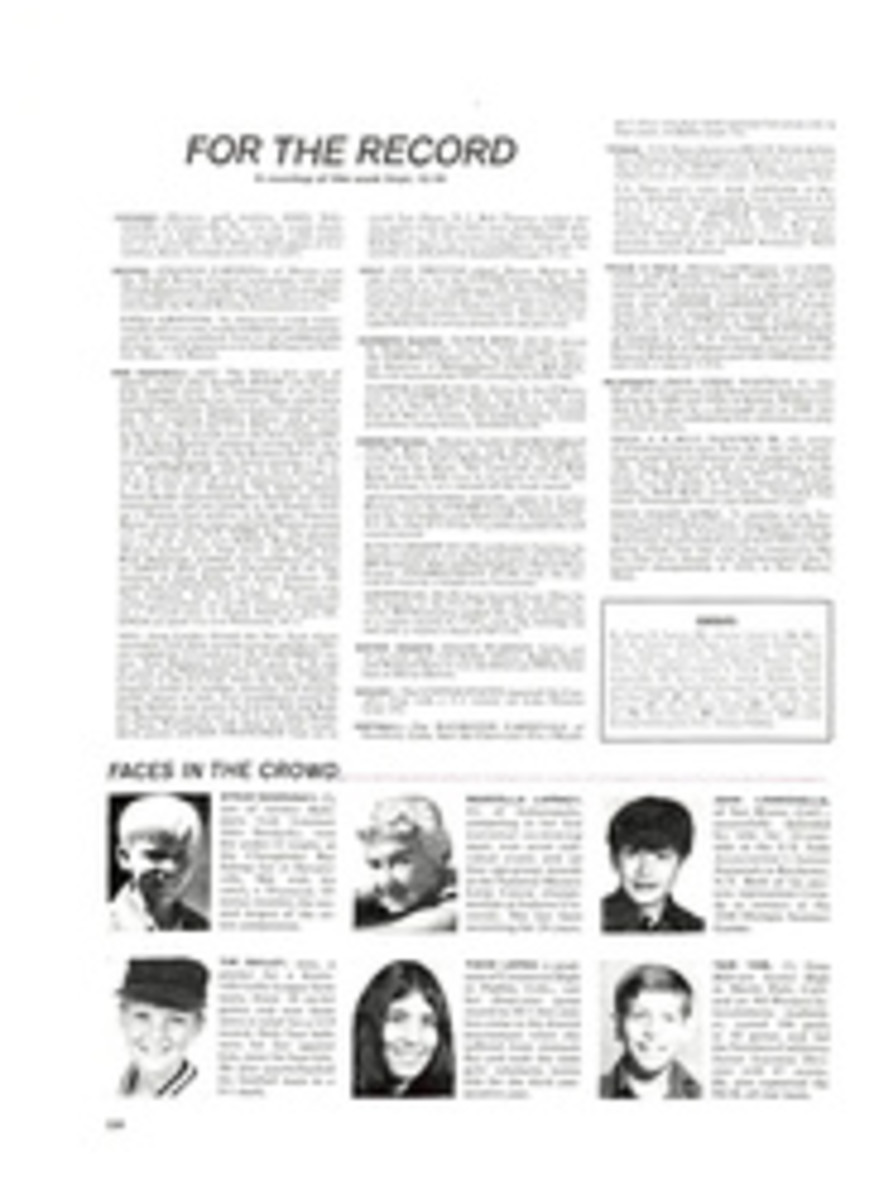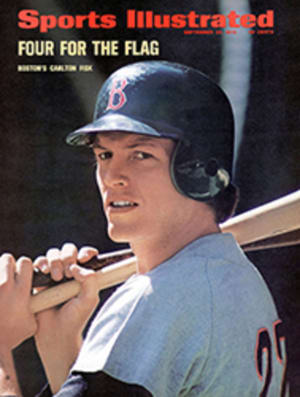
O CANADA! THERE GOES ANOTHER
Still suffering from the all-too-recent hockey calamity visited on her by the Russians, plucky Canada put another national treasure on the line last week—and lost that one to a superpower, too, in a wicked naval battle on the waters of Lake Ontario. The prize: a 76-year-old piece of silver called the Canada's Cup that is to yacht racing on the Great Lakes what the America's Cup is to the saltwater world at large. Over the years the United States had held the cup more often than not, but not since 1954.
As usual, Canada cloaked the sweat and steely purpose of her defense in the atmosphere of a Victorian garden party. The host Royal Canadian Yacht Club of Toronto, a place of formal bowers, ancient cannon, lawn-tennis courts and bowling greens, offered no hint of stress. For his part, the American challenger, a typographer's nightmare named Llwyd Ecclestone, was disarmingly pudgy and baby-faced. Llwyd calls himself Lloyd, naturally, and lives next door to Jack Nicklaus at Lost Tree Village, Fla. Among other things, he runs a construction company. "Don't let Llwyd fool you," said a friend. "He's as tough as they come. In his business, he has to be."
Ecclestone sailed in with a 39-foot sloop called Dynamite, representing Detroit's Bay View Yacht Club. Designed by New Englander Ted Hood to survive an elaborate five-boat elimination series in the vagrant summer breezes of Lake Michigan, Dynamite would clearly go best in light weather.
By contrast the 40-foot Canadian defender, Mirage, was known to be a sluggard when the wind slept and smartened up only when it blew 12 knots or better. Designer George Cuthbertson had created her precisely so because that was calculated to be minimum fare on Lake Ontario in September. The Canadians could not be faulted for letting George do it again; his Manitou had won a famous victory over the American Niagara in the 1969 defense, Niagara being a creation of that America's Cup tiger, Olin Stephens. At Mirage's helm was Gordon Fisher, a newspaper executive and commodore of the RCYC.
There were to be two America's Cup-style buoy races of 21 miles each that would count a point apiece and an over-nighter of some 180 miles worth two points. Should the boats then be tied, a final race around the buoys would settle things.
The 12th defense of the cup began before a large spectator fleet, but, anticlimactically, the first race was all but becalmed—and eventually postponed. Ecclestone had managed a substantial lead when time was called. The next day it looked like Dynamite weather once again; the surface was nearly as calm as a bowl of broth. When the starting gun fired, Mirage had the upper hand; Dynamite almost immediately tacked to clear her air. Within minutes, however, her superiority in light wind showed and she eased ahead.
Then, like magic, the wind freshened up to the 12 knots Mirage needed, and within a quarter hour she passed her rival as if she were anchored. This served warning of what Mirage could do, but, as suddenly as the wind came, it went, and the Canadian boat eventually lost by one minute, 40 seconds.
The following day brought wind as weak. Her only hope a cancellation, Mirage in preliminary sparring lolled and rolled, while the Dynamiters trimmed the American sloop to every whisper of air in an effort to convince the race committee there was wind aplenty. There was—for Dynamite. Though Mirage again took the start, the U.S. won one of the most lopsided victories in cup history by 18 minutes, 10 seconds.
So it was Canada 0-2 as the over-nighter began, and a case of do or die. Fisher later called it "one of the greatest match races ever sailed." Consider: over a 177.6-mile course, forth and back across the lake, in weather so changeable that Fisher "howled with rage" at its vagaries, the lead changed hands no fewer than seven times. Mirage won in the very last hour and a half and then only because Fisher made a daring gamble.
Dynamite was ahead; the wind was softening. On the theory that he must do something, anything, Fisher deliberately sailed for a fiat spot and prayed for a new breeze on the other side that would fetch him home. That is exactly what he found. It blew Mirage swiftly toward the finish line and took its sweet time getting over to Dynamite. Though the boats had battled through an afternoon and a long night and most of the next day, Mirage's margin at the finish was less than five minutes. And now the score was 2-2.
Llwyd Ecclestone awoke on the morning of the tie-breaking race to a weather forecast that sounded both encouraging and discouraging for the Americans. The wind would blow from next to nothing (good) to 20 knots (bad). The action began with the stuff of a first-rate match race: a tight start to weather and, as the wind abruptly shifted, a nip-and-tuck, off-the-wind duel; a luffing match; a 27-tack upwind battle. Gradually Mirage fell behind, never to catch up. But though Dynamite eventually won by one minute and seven seconds, the margin does not tell the full story, for the breeze at the end was building and Mirage was charging up.
For the first time in 18 years the Canada's Cup belonged to the U.S. "As we crossed the finish line, we felt we were almost in another world," said Ecclestone, clutching a champagne glass. All about were the stiffest upper lips in the British Commonwealth. For Canada it had been a very bad month.
PHOTO
ERIC SCHWEIKARDT
America's "Dynamite" ghosts along in the kind of light breeze she loves. There was just the right amount of it on Lake Ontario to thwart her foe.
PHOTO
ERIC SCHWEIKARDT
Winner Ecclestone: baby-faced and tough.
PHOTO
ERIC SCHWEIKARDT
Canada's "Mirage" flies a busty spinnaker to harness the wind, but there was never enough.

